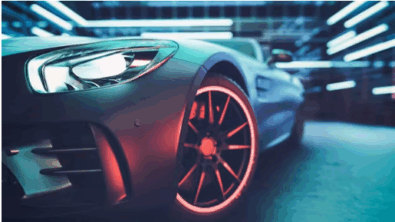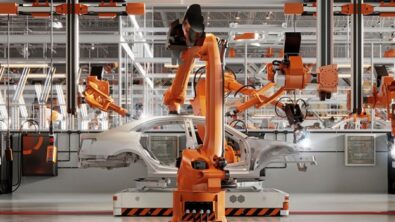Five disruptive trends driving autonomous vehicle development

The automotive industry is experiencing unprecedented changes driven by disruptive innovations and customer demand for a new driving experience leading to the development of autonomous vehicles. Staying ahead in the competition will require automotive companies to become fast and flexible, using a holistic model-based approach that integrates every aspect of autonomous vehicle development and its sophisticated electrical and electronic systems (E/E) systems.
Disruptive Trend #1: Artificial Intelligence accelerating the pace of innovation
Automotive, technology, and 5G telecommunications companies are teaming together with cities to define the next generation of autonomous mobility. The interactions between these complex environments will challenge and inspire engineering innovation. Artificial intelligence (AI) is a critical thread that ties these communities together to create new smart solutions efficiently, connected and that can sense, automate and predict in ways that we could hardly imagine just a decade ago.
Disruptive Trend #2: The influx of technology-oriented automotive start-ups into the market
The race for autonomous driving innovation has begun, and competition has intensified with technology giants and start-ups aiming for their share in the market. Up-and-coming electric vehicle manufacturers show that powerful new technologies can be developed rapidly and profitably by focusing on innovation and smart manufacturing.
Disruptive Trend #3: Disruptive innovations forcing traditional car manufacturers to change radically
With electrification on the rise, E/E systems are increasingly important and are replacing mechanical approaches to delivering vehicle functions. Legacy automakers are struggling with adopting the same approach to innovation while maintaining the same levels of quality and efficiency. Adapting to new digital technologies in manufacturing and engineering methods will be a must for traditional car manufacturers.
Disruptive Trend #4: The explosion of electronics and electrical systems in automotive products
The rapid introduction of new technologies means the traditional role of vehicle hardware is being replaced by software and E/E systems. This shift implies that E/E architecture is becoming crucial for car manufacturers, and a next-generation approach is needed to tackle the increased complexity. Powerful integrated E/E systems development tools will be required to tackle increased complexity while remaining competitive.
Disruptive Trend #5: Increasing consumer demand for autonomous driving systems and advanced driver assistance systems
Consumers expect to enjoy a new user experience with more advanced driver assistance systems (ADAS) functionalities and higher levels of autonomy. Autonomous vehicles (AVs) are driving up the number of system functions as more features are being added, increasing the demand for bandwidth. System functions must also communicate using multiple networks within one vehicle. Many connected hardware redundancies, sensors, and displays are required to make these technologies safe and reliable, adding further complexity.
While disruptive innovations continue to impact the automotive industry, it is time for automotive manufacturers to focus on overcoming the challenges of AV development and the complexities of E/E architecture. From architectural definition, electrical systems design, and software engineering, Siemens offers a complete set of autonomous vehicle solutions for all critical technical disciplines.


